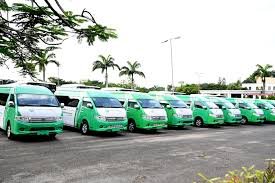Motorists’ frustrations at the CNG conversion centres across the country remain the only news since the project started. Under the table dealings, corruption and sundry unwholesome practices have been reportedly characterised the project aimed to make Nigeria adjust to climate change, emissions friendly environment and also by the same token belong to the league of technologically advanced nations of the world. Sultan Aderinsola examines the nightmares, challenges experienced by the drivers, associated with the conversion, as some of the motorists count their loses.

Nigeria’s shift to Compressed Natural Gas (CNG) as a vehicular fuel, launched under the Presidential CNG Initiative (PCNGI) in October 2023, aims to ease the economic strain from petrol subsidy removal and tap into the nation’s vast natural gas reserves over 206 trillion cubic feet, among the world’s largest. With petrol prices at ₦998 per liter at NNPC stations late last year and inflation reaching 33.88% in October, CNG’s affordability priced at roughly ₦230 per kilogram and lower emissions make it an attractive alternative. Yet, the initiative faces a significant hurdle: the insufficient number of CNG refueling stations across the country, particularly in Abuja, the Federal Capital Territory. This report by Sultan Rabiu examines the state of CNG infrastructure in Nigeria, with a focus on Abuja.
CNG’s Limited Infrastructure Reach
The Nigerian National Petroleum Company Limited (NNPC), alongside private partners like NIPCO Gas and Axxela, has championed CNG as a cost-effective fuel, offering savings of 40-60%, according to PCNGI Project Director Michael Oluwagbemi in an interview with Vanguard. However, the infrastructure to support this transition remains small in number. In 2024, NNPC reported over 100 CNG stations either operational or in development nationwide, including 12 newly commissioned in Abuja and Lagos, as announced by Group CEO Mele Kyari. Despite this, the total is dwarfed by the thousands of petrol stations across Nigeria, and progress falls short of the PCNGI’s target to convert one million vehicles by 2027.
During the commissioning in Abuja, Kyari described the CNG rollout as “irreversible,” promising 75 additional stations by year-end. However, industry reports from The Punch and BusinessDay indicate that by 2024, operational stations remained below 150, with no updates confirming the full delivery of that pledge as of now. This sluggish expansion limits the program’s reach, especially in urban hubs like Abuja.
Abuja’s Thin CNG Coverage
Abuja, Nigeria’s capital with a population exceeding 1.5 million, is a key testing ground for CNG adoption due to its administrative role and dense traffic. NNPC listed eight operational CNG stations in the FCT, including Airport Road, Kubwa, Gaduwa, Olusegun Obasanjo Way, Dei-Dei Junction, Duste-Bwari Road, and Gwagwalada, with another under construction at Dutse-Alhaji, according to Channels TV. This marks an increase from fewer than five previously noted by NIPCO Gas, yet it remains inadequate for a city of Abuja’s scale and vehicle volume.
The scarcity creates real obstacles. In November, The Cable reported commercial drivers traveling over 100 kilometers to refuel, a challenge echoed by transporters interviewed by AP News. Stations, clustered in urban areas, leave peri-urban and rural zones around Abuja underserved, straining access for commuters and fleet operators. A typical 17 SCM (Standard Cubic Meter) tank, powering a four-cylinder car for about 200 kilometers, requires frequent refills, intensifying pressure on this limited network.
Government Pledges vs. On-Ground Realities
During the commissioning, Minister of State for Petroleum Resources (Gas) Ekperikpe Ekpo stressed CNG’s role in sustainable energy, pledging faster deployment. Yet, station development lags behind vehicle conversion efforts, creating a supply bottleneck. The Ajaokuta-Kaduna-Kano (AKK) pipeline, meant to enhance gas supply to northern regions including Abuja, remains unfinished, according to NNPC further delaying solutions.
The Nigerian Midstream and Downstream Petroleum Regulatory Authority (NMDPRA) has projected a need for at least 500 stations nationwide to support initial CNG adoption. In Abuja, the eight stations serve only a fraction of the estimated 500,000 vehicles registered in the FCT, based on Federal Road Safety Corps statistics, underscoring a significant capacity deficit.
Economic and Social Impacts
Abuja’s limited CNG stations undermine the initiative’s economic benefits. With petrol at ₦998 per liter at NNPC pumps, compared to CNG’s ₦230 per kg, the savings are clear, yet drivers balk at conversion without reliable refuelling.
Steps Toward a Solution
Addressing Abuja’s CNG station shortage requires swift action. NNPC’s collaboration with NIPCO Gas, which operates over 20 stations nationwide, could expand to target 20 more FCT stations by next year, matching traffic demands. Completing the AKK pipeline, projected for this year would secure gas supply and ease distribution woes. Subsidizing station construction alongside conversion kits could draw private investment, as suggested by energy analysts in ThisDay.
Public trust is equally critical. NMDPRA and PCNGI have emphasized CNG’s safety lower flammability than petrol yet awareness efforts remain limited, Expanding technician training, currently constrained at a few centers would also support station demand by speeding up conversions.
Nigeria’s CNG initiative offers a pathway to affordability and sustainability, but its success depends on infrastructure matching its vision. In Abuja, eight stations cannot support a capital poised to lead this shift, leaving drivers reliant on expensive petrol amid economic hardship. With clear commitments from NNPC and PCNGI, the way forward involves rapid station growth, pipeline completion, and confidence-building measures. Until then, Abuja’s CNG potential remains stalled, a promise yet to be fully realized.



